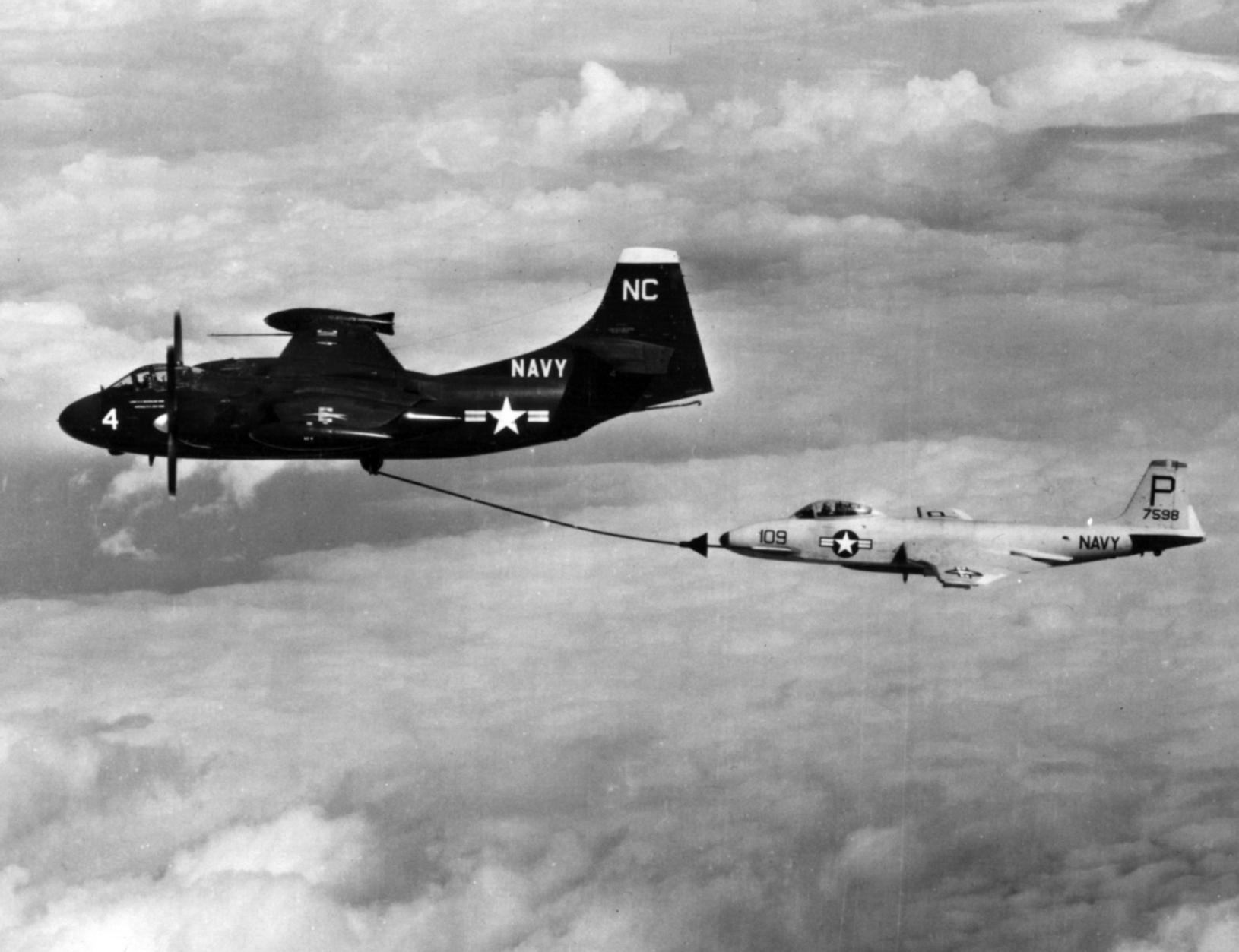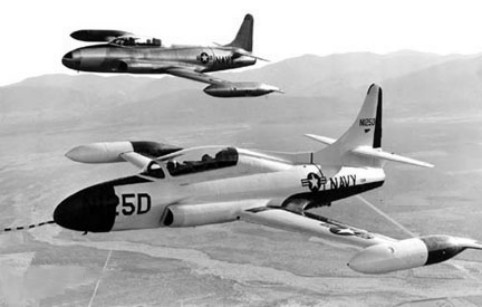|
VAH-15
VAH-15 was a short-lived Heavy Attack Squadron of the U.S. Navy, based at NAS Norfolk, Virginia. The squadron flew the North American AJ Savage and Lockheed TV-2 Seastar aircraft. The squadron was established on 15 January 1958 with the designation heavy attack but its primary mission was to provide aerial refueling Aerial refueling, also referred to as air refueling, in-flight refueling (IFR), air-to-air refueling (AAR), and tanking, is the process of transferring aviation fuel from one aircraft (the tanker) to another (the receiver) while both aircraft a ... to the Naval Air Force, Atlantic Fleet. It was disestablished a little more than one year later, on 15 February 1959. See also * History of the United States Navy * List of inactive United States Navy aircraft squadrons References Heavy attack squadrons of the United States Navy Wikipedia articles incorporating text from the Dictionary of American Naval Aviation Squadrons {{USN-stub ... [...More Info...] [...Related Items...] OR: [Wikipedia] [Google] [Baidu] |
List Of Inactive United States Navy Aircraft Squadrons
There are hundreds of US Navy aircraft squadrons which are not currently active dating back to before World War II (the U.S. Navy operated aircraft prior to World War I, but it did not organize them in squadrons until after that war). To be more accurate: there are hundreds of former U.S. Navy aircraft squadrons which have been disestablished and no longer exist and there are approximately 40 or so U.S. Navy aircraft squadrons which have been deactivated and which currently exist only "on paper" in an inactive status. These disestablished and/or deactivated squadrons are sometimes incorrectly referred to as "decommissioned" squadrons, but proper usage prior to 1998, was that squadrons were "established" and "disestablished" and after 1998, squadrons are "established", "deactivated" and sometimes "reactivated". It has never been correct to refer to U.S. Navy aircraft squadrons as being "commissioned" and "decommissioned", ships are commissioned and decommissioned, U.S. Navy aircr ... [...More Info...] [...Related Items...] OR: [Wikipedia] [Google] [Baidu] |
North American AJ Savage
The North American AJ Savage (later A-2 Savage) is an American carrier-based aircraft, carrier-based medium bomber built for the United States Navy by North American Aviation. The aircraft was designed shortly after World War II to carry atomic bombs and this meant that the bomber was the heaviest aircraft thus far designed to operate from an aircraft carrier. It was powered by two piston engines and a turbojet buried in the rear fuselage. The AJ-1 first became operational in 1950 and several were based in South Korea during 1953 as a deterrent against North Korea. Of the 140 built, plus three prototypes, 30 were reconnaissance aircraft. Aerial refueling, Inflight-refueling equipment was deployed on the Savage in the mid-1950s. The bomber was replaced by the Douglas A3D Skywarrior beginning in 1957. Design and development At the end of World War II, the U.S. Navy began a design competition on 13 August 1945 for a carrier-based bomber which could carry a bomb that was won by Nor ... [...More Info...] [...Related Items...] OR: [Wikipedia] [Google] [Baidu] |
United States Navy
The United States Navy (USN) is the maritime service branch of the United States Armed Forces and one of the eight uniformed services of the United States. It is the largest and most powerful navy in the world, with the estimated tonnage of its active battle fleet alone exceeding the next 13 navies combined, including 11 allies or partner nations of the United States as of 2015. It has the highest combined battle fleet tonnage (4,635,628 tonnes as of 2019) and the world's largest aircraft carrier fleet, with eleven in service, two new carriers under construction, and five other carriers planned. With 336,978 personnel on active duty and 101,583 in the Ready Reserve, the United States Navy is the third largest of the United States military service branches in terms of personnel. It has 290 deployable combat vessels and more than 2,623 operational aircraft . The United States Navy traces its origins to the Continental Navy, which was established during the American Revo ... [...More Info...] [...Related Items...] OR: [Wikipedia] [Google] [Baidu] |
Lockheed T-33
The Lockheed T-33 Shooting Star (or T-Bird) is an American subsonic jet trainer. It was produced by Lockheed and made its first flight in 1948. The T-33 was developed from the Lockheed P-80/F-80 starting as TP-80C/TF-80C in development, then designated T-33A. It was used by the U.S. Navy initially as TO-2, then TV-2, and after 1962, T-33B. The last operator of the T-33, the Bolivian Air Force, retired the type in July 2017, after 44 years of service. Design and development The T-33 was developed from the Lockheed P-80/F-80 by lengthening the fuselage by slightly more than 3 feet (1 m) and adding a second seat, instrumentation, and flight controls. It was initially designated as a variant of the P-80/F-80, the TP-80C/TF-80C. Design work on the Lockheed P-80 began in 1943, with the first flight on 8 January 1944. Following on the Bell P-59, the P-80 became the first jet fighter to enter full squadron service in the United States Army Air Forces. As more advanced je ... [...More Info...] [...Related Items...] OR: [Wikipedia] [Google] [Baidu] |
NAS Norfolk
Naval Station Norfolk is a United States Navy base in Norfolk, Virginia, that is the headquarters and home port of the U.S. Navy's Fleet Forces Command. The installation occupies about of waterfront space and of pier and wharf space of the Hampton Roads peninsula known as Sewell's Point. It is the world's largest naval station, with the largest concentration of U.S. Navy forces through 75 ships alongside 14 piers and with 134 aircraft and 11 aircraft hangars at the adjacently operated Chambers Field. Port Services controls more than 3,100 ships' movements annually as they arrive and depart their berths. Air Operations conducts over 100,000 flight operations each year, an average of 275 flights per day or one every six minutes. Over 150,000 passengers and 264,000 tons of mail and cargo depart annually on Air Mobility Command (AMC) aircraft and other AMC-chartered flights from the airfield's AMC Terminal. History The area where the base is located was the site of the original ... [...More Info...] [...Related Items...] OR: [Wikipedia] [Google] [Baidu] |
Lockheed TV-2 Seastar
The Lockheed T2V SeaStar, later called the T-1 SeaStar, is a carrier-capable jet trainer for the United States Navy that entered service in May 1957. Developed from the Lockheed T-33 (itself derived from the Lockheed P-80 Shooting Star), it was powered by one Allison J33 engine. Design and development Starting in 1949, the U.S. Navy used the Lockheed T-33 for land-based jet aircraft training. The T-33 was a derivative of the Lockheed P-80/F-80 fighter and was first named TO-2, then TV-2 in Navy service. However, the TV-2 was not suitable for operation from aircraft carriers. The persisting need for a carrier-compatible trainer led to a further, more advanced design development of the P-80/T-33 family, which came into being with the Lockheed designation L-245 and USN designation T2V. Lockheed's demonstrator L-245 first flew on 16 December 1953 and production deliveries to the US Navy began in 1956. Compared to the T-33/TV-2, the T2V was almost totally re-engineered for car ... [...More Info...] [...Related Items...] OR: [Wikipedia] [Google] [Baidu] |
Aerial Refueling
Aerial refueling, also referred to as air refueling, in-flight refueling (IFR), air-to-air refueling (AAR), and tanking, is the process of transferring aviation fuel from one aircraft (the tanker) to another (the receiver) while both aircraft are in flight. The two main refueling systems are ''probe-and-drogue'', which is simpler to adapt to existing aircraft, and the ''flying boom'', which offers faster fuel transfer, but requires a dedicated boom operator station. The procedure allows the receiving aircraft to remain airborne longer, extending its range or loiter time. A series of air refuelings can give range limited only by crew fatigue/physical needs and engineering factors such as engine oil consumption. As the receiver aircraft can be topped up with extra fuel in the air, air refueling can allow a takeoff with a greater payload which could be weapons, cargo, or personnel: the maximum takeoff weight is maintained by carrying less fuel and topping up once airborne. Aerial ... [...More Info...] [...Related Items...] OR: [Wikipedia] [Google] [Baidu] |
History Of The United States Navy
The history of the United States Navy divides into two major periods: the "Old Navy", a small but respected force of sailing ships that was notable for innovation in the use of ironclads during the American Civil War, and the "New Navy" the result of a modernization effort that began in the 1880s and made it the largest in the world by 1943. The United States Navy claims October 13, 1775 as the date of its official establishment, when the Second Continental Congress passed a resolution creating the Continental Navy. With the end of the American Revolutionary War, the Continental Navy was disbanded. Under the Presidency of John Adams, merchant shipping came under threat while in the Mediterranean by Barbary pirates from four North African States. This led to the Naval Act of 1794, which created a permanent standing U.S. Navy. The original six frigates were authorized as part of the Act. Over the next 20 years, the Navy fought the French Republic Navy in the Quasi-War (1798� ... [...More Info...] [...Related Items...] OR: [Wikipedia] [Google] [Baidu] |
Heavy Attack Squadrons Of The United States Navy
Heavy may refer to: Measures * Heavy (aeronautics), a term used by pilots and air traffic controllers to refer to aircraft capable of 300,000 lbs or more takeoff weight * Heavy, a characterization of objects with substantial weight * Heavy, a type of strength of Scottish beer * Heavy reader, a reader of 21 or more books per year, according to the Pew Internet and American Life Project report, "The Rise of E-Reading" (2012) Arts, entertainment, and media Music Groups * The Heavy (band), a rock band from England Albums * ''Heavy'' (Heavy D album), 1999 * ''Heavy'' (Iron Butterfly album), a 1968 album by Iron Butterfly * ''Heavy'' (Bin-Jip album), the second studio album by Bin-Jip Songs * "Heavy" (Collective Soul song), 1999 * "Heavy" (Lauri Ylönen song), 2011 * "Heavy" (Linkin Park song), 2017 * "Heavy" (Anne-Marie song), 2017 * "Heavy", by Cxloe, 2020 * "Heavy", by Flight Facilities featuring Your Smith, 2021 * "Heavy", by Peach PRC, 2021 Television * ''Heavy' ... [...More Info...] [...Related Items...] OR: [Wikipedia] [Google] [Baidu] |




_docked_at_Naval_Station_Norfolk%2C_in_October_1937.jpg)


